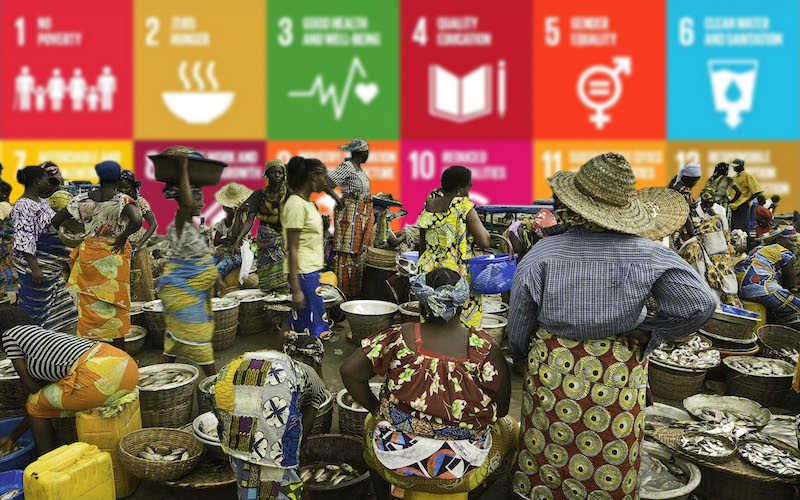
Do the SDGs Herald the End of World Poverty or of World Ambitions?
The recent launch of the UN Sustainable Development Goals saw the UN set out a list of 17 goals that should be achieved by 2030. Even if they are patterned after the Millennium Development Goals (which expired in 2015), the SDGs show a marked change in the UN’s approach to international development.
The Millennium Development goals were drawn up by a small group of individuals and included finite and measurable targets, such as:
- Eradicating extreme hunger and poverty
- Achieving universal primary Education.
By contrast, the SDG goals are much broader. They include:
- Promoting sustained, inclusive and sustainable economic growth, with full and productive employment, and decent work for all.
- Making cities and human settlements inclusive, safe, resilient and sustainable.
- Promoting peaceful and inclusive societies for sustainable development, provide access to justice for all and build effective, accountable and inclusive institutions at all levels.
Who could argue against the desirability of ending poverty, promoting full and productive employment, and providing access to justice for all. The problem is not with the goals themselves, but that these goals are either not achievable, or impossible to quantify.
Development by committee
The goals were drawn up by a panel of 26 experts, headed by three co-Chairs, all of whom were politicians. The UN initiated an ambitious outreach program to increase input into the goal defining process. This committee-based approach to the drafting process has resulted in goals, which while desirable, are not realistically achievable, or are so vague that there is no point at which we can say they have been achieved.
That these goals are so vaguely defined should be concerning to all of us. The SDGs are to be funded by taxpayers across the world, so it is reasonable to ask what this money will achieve, and whether the funds will help or hinder those it is sent to help.
More than $134 billion of international assistance flows into Africa each year. With this level of investment Africa should be making significant strides towards achieving a strong, stable, continent with a flourishing economy. We should be hearing about the ending of inequality in the region, but we don’t.
In many ways the situation on the ground shows the opposite to be true. Many countries have increased national debt, and within those countries the poor are becoming poorer, not richer. The economies of these nations fail to function as they should. The clear implication is that development-related foreign aid not only doesn’t work, in many cases it has the opposite of the desired effect. This can be seen most clearly when we realize that during the last 60 years at least $1 trillion of development-related aid has entered Africa, yet real-terms income is now lower than it was during the 1970s. While accelerated population growth clearly plays a part in the continent’s dwindling fortunes, the vast amounts of support, coupled with the massive natural resources lurking beneath the soil should have easily supplanted it.
The problems of development
International development suffers from two significant difficulties that prevent it from achieving its purpose. The first, and most obvious problem is corruption. Money enters the country but does not find its way to the target. Foreign development agencies work with local agencies, and often with corrupt, bloated government bureaucracies. One of the worst offenders is the World Bank, which is reported to have seen more than $100 billion of loan funds lost to corruption.
The other reason that international development aid rarely achieves its goals is a lack of local understanding by the international agencies, and a lack of support and co-operation from local people. Planning specific instances of international development is often made the responsibilities of foreign experts who seek technical solutions, rather than look at the human impact on the communities they are seeking to help.
The history of international development aid is full of examples of the indifference of international agencies to local people. One of the most well known cases occurred in 2010 in Uganda where 20,000 people saw their homes burned to the ground by government soldiers, and were then removed from their land so that it could be taken over for a forestry project funded by the World Bank.
Imposing development from the outside almost never works. History demonstrates that sustainable development usually comes from within a nation and follows in the wake of political freedom. Western nations must stop propping up corrupt, bankrupt dictators who actively collude in the oppression of their own people. The rights of individual citizens must be respected, that is what will foster true innovation and development.
Rather than feeling that we have “to do something” to boost international development, we should ask instead “what needs to change?” The answer is simple; we must change the culture that supports foreign development experts and corrupt governments against the rights of the indigenous, local people. When ordinary people are given control over their own destiny, then we will see real progress in development. Until then, the lofty list of UN-backed SDGs will remain just that: a pipe dream.

